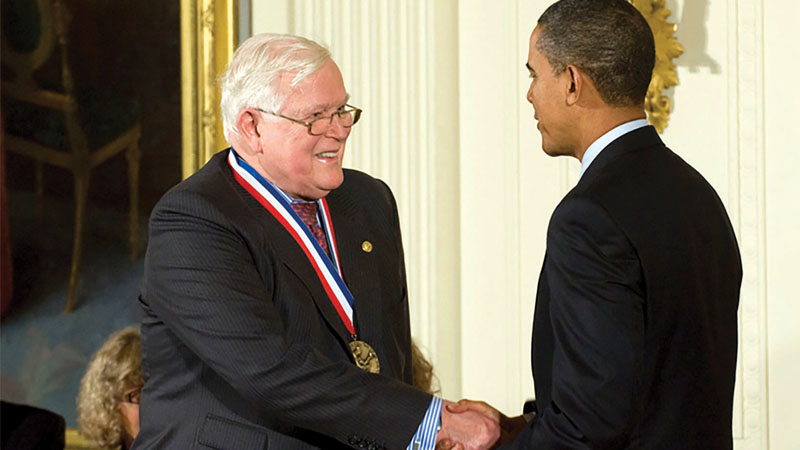Stay Up to Date
Submit your email address to receive the latest industry and Aerospace America news.
Rudolf Kalman’s work became a mainstay in flight-control software
Even decades after, Rudolf Emil Kalman’s former Ph.D. students recall being roused out of bed early by a ringing telephone, with Kalman on the line dissecting perceived flaws in their theorems. They had come to study from Japan, France, Turkey and the U.S., despite Kalman’s intimidating reputation and worries about their own command of abstract algebra.
Kalman, a polylingual mathematician and electrical engineer, in 1960 wrote a groundbreaking algorithm that was quickly adopted by NASA researchers who had been stymied by how to guide Apollo astronauts to the moon and back. Called the Kalman filter, the algorithm became a mainstay in high-performance military and commercial flight-control software.
The Kalman filter helps calibrate each Orbital ATK Cygnus cargo ship’s docking position on the International Space Station. It calculates the correct altitude for releasing an Orion capsule’s drogue chutes that slow the crew module on its return to Earth. It also helps forecast the weather, pinpoint cellphone locations and fine tune trajectories of drones, submarines and missiles.
To those in the field of guidance, navigation and control, Kalman is what “Steve Jobs is to the mobile device community or Elon Musk is to the electric car industry,” says Lesley Weitz, lead simulation modeling engineer with the Center for Advanced Aviation System Development at MITRE, which operates federally-sponsored research centers.
The Hungarian-born Kalman died July 2 in Gainsville, Florida. He was 86.
In 2008, Kalman’s elegant algorithm earned him the National Medal of Science, the nation’s highest recognition for scientific achievement. Though Kalman was blunt and demanding, generations of students from the University of Florida, Stanford University and ETH Zurich credit “REK” with profound influence on their careers.
Kalman conceived the idea for his algorithm in the late 1950s while at the Research Institute for Advanced Studies in Baltimore, which later became part of Martin Marietta. The Kalman filter was a solution to the imperfectness of mathematical models. All statistical estimations can be undermined by faulty sensor measurements, unexpected disturbances and other variables.
Kalman’s computer-programmable algorithm reduced the uncertainties through two dynamic equations, said Angus Andrews, a former senior scientist at the Rockwell Science Center. In Kalman filtering, one equation generates estimates of the unknown variables. The second equation estimates the accuracy of the uncertainty estimates.
Kalman published his research, “A New Approach to Linear Filtering and Prediction Problems,” in March 1960 in a journal of the American Society of Mechanical Engineers.
At the time, Stanley Schmidt, then the chief of the Dynamic Analysis Branch at NASA’s Ames Research Center in California, had difficulty understanding Kalman’s paper. But Schmidt believed the theory was the answer to the challenge of plotting the Apollo mission’s circumlunar orbit. Not only was the moon a moving target, the spacecraft’s sensitive trajectory was buffeted by a host of factors — such as the need to change velocity in tandem with changes in altitude — that could send the astronauts careening off into deep space.
The “extended” Kalman filter that was eventually loaded on Apollo 11 worked fast. It continuously generated new best estimates based on the most-immediate previous state without using much memory. That was no small matter for the Apollo guidance computer, which had less than one megabyte of memory, not enough to store even one song on an iPhone.
Andrews regards the Kalman filter as peerless. He calls it the “Maslow hammer” for complex, nonlinear estimation problems, citing the American psychologist Abraham Maslow’s observation that to someone with only a hammer, everything is a nail. ★
Stay Up to Date
Submit your email address to receive the latest industry and Aerospace America news.




